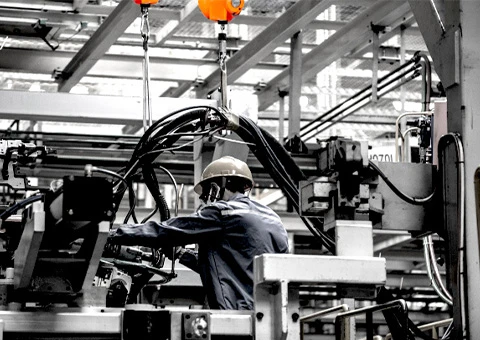small gantry crane
Understanding Small Gantry Cranes Versatile Solutions for Material Handling
Small gantry cranes have become increasingly popular in various industrial applications due to their versatility, ease of use, and cost-effectiveness. These cranes are particularly designed for lifting and transporting materials in environments with limited space, making them ideal for smaller workshops, garages, and even construction sites. This article explores the essential features, advantages, applications, and limitations of small gantry cranes to provide a comprehensive understanding of this invaluable piece of equipment.
What is a Small Gantry Crane?
A small gantry crane consists of a bridge, supported by two vertical legs, which are typically mounted on wheels for mobility. The design allows for the crane to operate over a specific area, with the lifting mechanism usually consisting of a winch or a hoist. Small gantry cranes can be adjusted in height and width to suit specific tasks, making them highly adaptable to different environments.
Key Features
1. Mobility Many small gantry cranes are equipped with wheels, allowing them to be easily moved around workspaces. This feature is crucial for operations that require frequent repositioning or relocation of the crane.
2. Adjustability The height and span of a small gantry crane can often be adjusted, enabling users to customize the crane to suit various lifting needs. This adjustability makes small gantry cranes suitable for a wide range of applications.
4. Material Construction Small gantry cranes are usually crafted from robust materials such as aluminum or steel, ensuring durability and stability during lifting operations.
Advantages of Small Gantry Cranes
1. Cost-Effective Compared to larger cranes, small gantry cranes are generally much more affordable, making them accessible to small businesses and individual users.
small gantry crane

2. Space-Saving Their compact design ensures they can fit into tight workspaces, making them an excellent choice for small workshops or home garages.
3. Ease of Assembly Most small gantry cranes are designed for straightforward assembly and disassembly, enabling users to set them up quickly without specialized tools or equipment.
4. Safety Features Many models include safety features such as locking mechanisms, emergency stops, and adjustable height settings, all aimed at ensuring the safety of operators during lifting tasks.
Applications
Small gantry cranes are employed in various sectors, including
- Manufacturing Used for moving heavy machinery parts or assembling components in production lines. - Construction Ideal for lifting materials like steel beams and prefabricated sections in tight spaces. - Automotive and Repair Shops Helpful for lifting engines or other heavy automotive components during repairs and maintenance. - Warehousing Facilitate the movement of goods, helping in the organization and stocking of various products.
Limitations
Despite their many advantages, small gantry cranes do have some limitations. Their load capacity is generally lower than that of larger cranes, which may restrict their use in heavyweight applications. Additionally, while they can be moved easily, they may not be suitable for uneven surfaces without additional measures for stabilization.
Conclusion
Small gantry cranes are versatile and effective solutions for material handling in various applications. Their affordability, mobility, and ease of use make them an appealing choice for businesses that require efficient lifting solutions without the space for larger equipment. As industries continue to evolve and space constraints become more common, the small gantry crane stands out as an indispensable tool in modern material handling and logistics. Whether for individual projects or industrial use, these cranes offer a practical and reliable lifting solution.
-
PML 6 Lifting Magnet Troubleshooting GuideNewsJul.25,2025
-
Permanent Magnetic Lifter Market TrendsNewsJul.25,2025
-
Machinery Mover Applications in IndustryNewsJul.25,2025
-
Heavy-Duty Machine Moving Dollies DesignNewsJul.25,2025
-
Unlock Seamless Relocation with Our Heavy Equipment Moving ExpertiseNewsJun.06,2025
-
Unleash Unrivaled Flexibility with Our Adjustable Gantry CraneNewsJun.06,2025
-
Unleash Heavy-Duty Efficiency with Our Industrial Gantry Crane SolutionsNewsJun.06,2025
